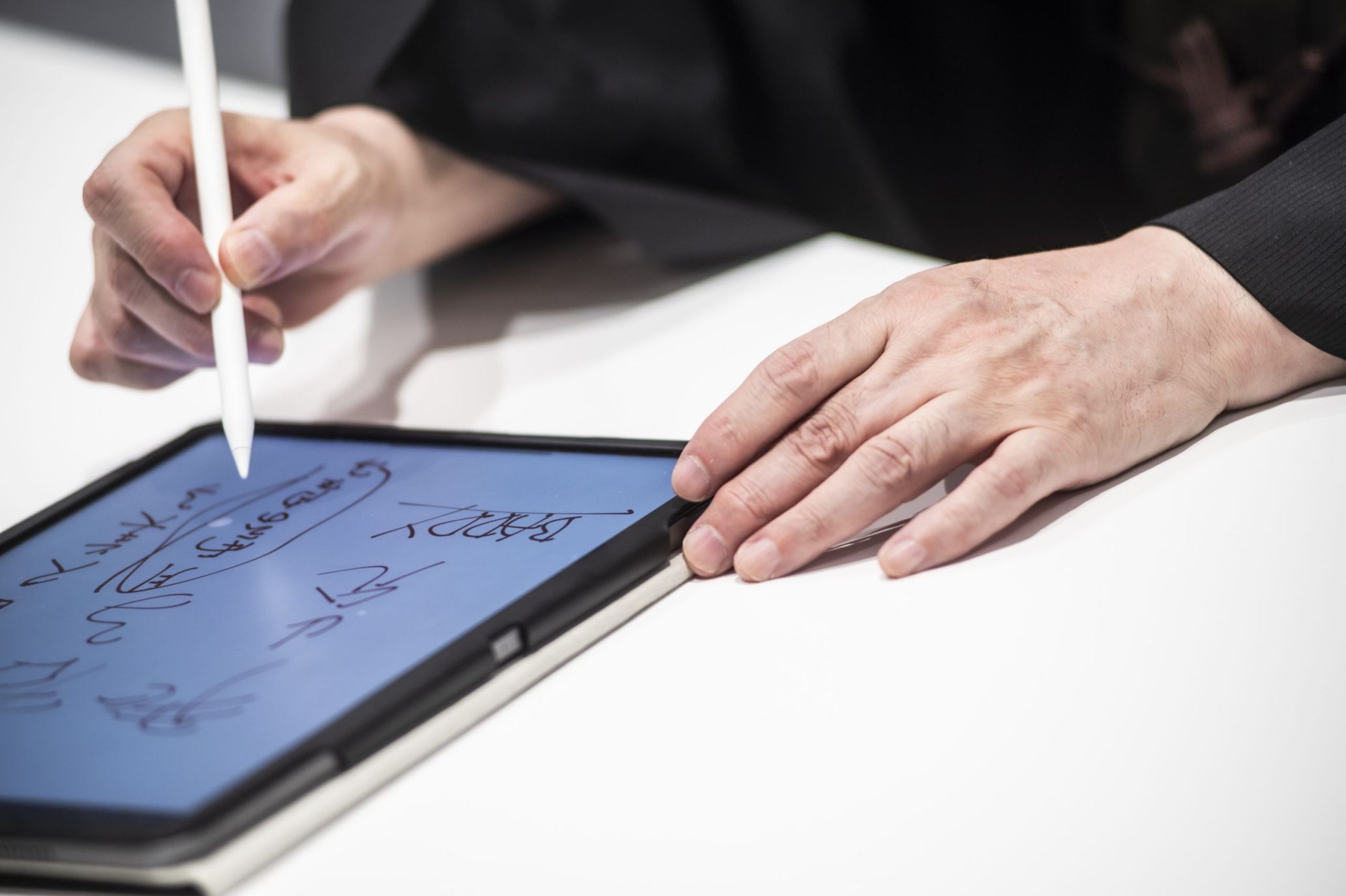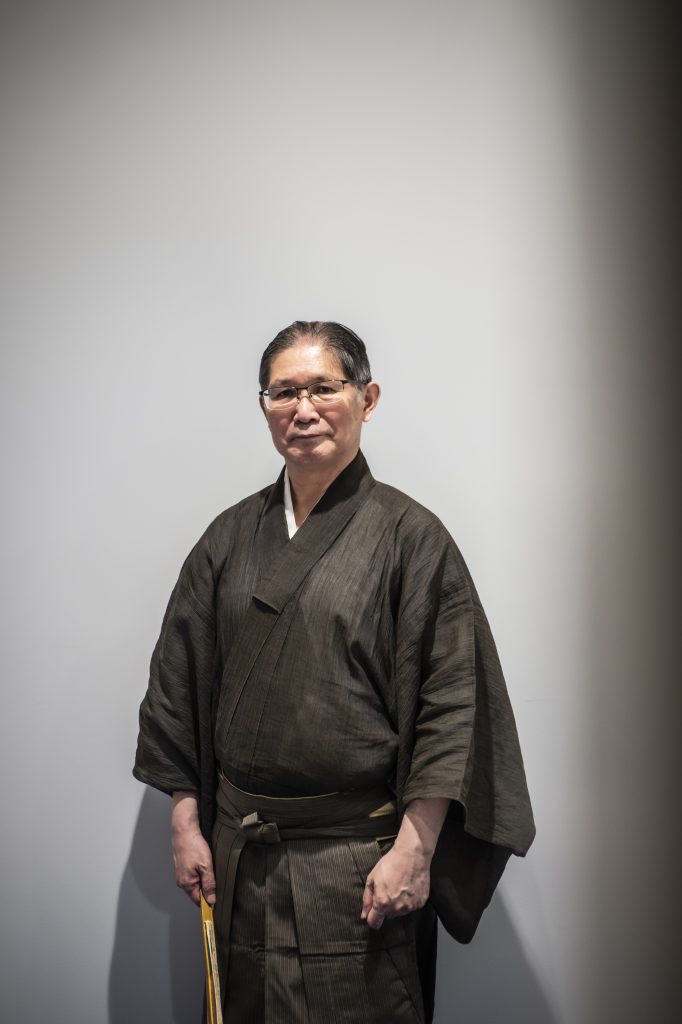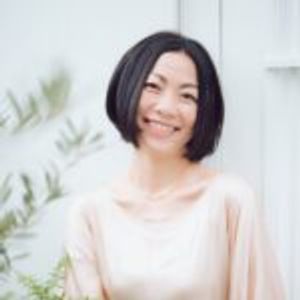If I say that the theme of this article is about “seeing the invisible”, you may imagine a story about psychic ability. However, human beings have been “seeing” things without using the eyes, a function of the body. Imagine dreams, illusions, or an abacus in the mind to do mental calculation. Noboru Yasuda, a Noh performer, wrote a book called “A Journey to Search for the Invisible.” Noh is one of the oldest forms of theatre in the world, which was established in the Muromachi period by Zeami.
“In noh, I specialize in playing the waki roles. The waki plays a role of connecting the shite, who are not from this world, to the human world. Most of them are travelers. In the midst of the journey, they encounter invisible things. As a matter of fact, I call them “augmented reality in the brain”, and it makes sense that the Japanese, who created the noh theater, are very good at this practice. I have taken many augmented reality trips.”
Yasuda says a journey to encounter invisible things happens between the line that connects the point of departure and the point of arrival: the space in between the two. This is a space you have unexpected encounters deviating from your primary destination. The writer senses something deftly and goes through dream-like experience. In his book, Yasuda wrote about many of these journeys.
“When I talk about a journey, it’s not about getting to the destination. The emphasis is on the path to get there. You don’t go on these trips by train or by air. It’s a journey by foot as in Matsuo Basho’s Oku no Hosomichi. In my book, I featured several episodes about these places that I went by foot.”
For example, Yasuda wrote about his impulsive decision to drop by at Ichinotani in Hyogo Prefecture, which is known for the battle in the Tale of Heike. This battle became the turning point of the Genpei War as Yoshitsune Minamoto succeeded in a surprise attack by running down a cliff on a horseback that no one imagined that he would do. The place is featured in a noh play. When Yasuda is at Ichinotani, he started to see events unfolding one after the other in front of his eyes, that were metaphorical of the Taira and Minamoto clans. As these things were happening, Yasuda revived the battle of more than 1000 years ago in his brain generating augmented reality. He had the ability to detect synchronicity, which were concealed in casual events.
“Until I get up to go, I usually find the journey a bit tiring or cumbersome. Even so, I would continue walking and eventually experience events similar to Ichinotani. In that instance, I could really “feel” the battle of Taira and Genji that took place more than 1,000 years ago. Nowadays, people look for something that is palpable or clear-cut, and I am talking about the opposite of that. It’s about accepting complexity. It’s about accepting inexplicability. By doing so, you are able to see things that you didn’t expect to see. By acknowledging that things can be incomprehensible, you are liberated from the need to clarify everything. I think the Japanese have been so good at understanding this concept more than the others.” Yasuda thinks this thought process is close to the spirits of noh theatre. He added, “The world of noh is about showing an illusion.”
In Japan, there is a history of expressing intangibility through performing arts and literature and elevate it to higher art.
Nowadays, we hear the words “visually attractive” and “visualization” constantly and the mainstream idea is to ensure that anything you see is unambiguous. However, since ancient times, the Japanese has a history of perceiving the unseen and elevating it into the form of art by expressing it through performing arts and literature. As was described earlier, the good examples are The Tale of Genji as well as The Tale of Heike, which are played in noh theater or narrated by Biwa Hoshi. If we force ourselves to see the invisibles, something would always be lost. It’s probably similar to miss anything in-between when we jump from the point of departure to the destination. Yasuda continues, “We won’t revert the 4D to 2D. The 4D is about adding the time axis to 3D. To keep the 4D, the point is to rely more on the augmented reality in the brain than your own eyes. This is a different dimension from anything clear-cut or evident. And, in a way, it allows us to unbind ourselves from those views as well. I also think that it gives us a hint on how to liberate ourselves from pressure and anxiety that people impose on us.
Embrace ambiguity and the in-between spaces. The Journey of Looking for the Invisible is filled with stories about exploring intangibility. It also leads the readers to the in-between places to “see” what was actually there. Reading is similar to a journey. It takes the readers to other places. However, practical books are all about learning the know-hows easily and it’s hard to get away from reality. We all get caught up in it. When we explore the noh theater’s values that Yasuda addresses, it probably helps free ourselves in ways that we had never expected. Freedom is not just about crossing the borders.
Noboru Yasuda
Yasuda is a noh performer of the Shimogakarihoushouryu School. During high school, Yasuda became interested Chinese oracle bone script and ancient Chinese philosophy after playing mahjong and poker. While performing as a waki-kata of the noh theater, he holds “Yugaku-juku” seminars to teach The Analects in Tokyo and all over Japan. He also creates, directs, and performs in plays using the methodology of noh. He has written many books including, Noh that Leads to the Supernatural World: The Role of Waki (Chikuma Shobo), Noh: The Mechanism that Sustained Noh for 650 Years (Shinchosha). In June, The Journey to Search for the Invisible: Travel and Noh and Classics (Abi Shobo) was published, followed by To Live as a Multi-Faceted Person (Mishima-sha) in July.
Photography Kunihisa Kobayashi
Translation Fumiko M




